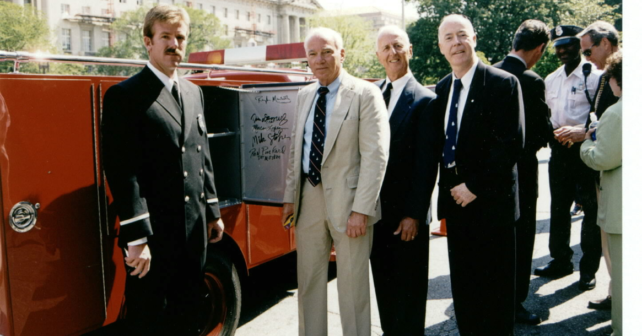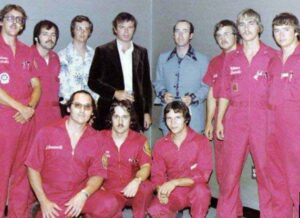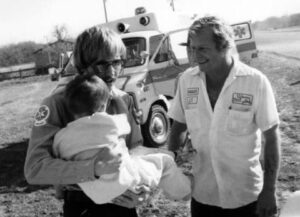
This year marks half a century since the 1972 debut of the television series “Emergency!” In that time, pre-hospital care has become exponentially more effective at saving lives, in part, due to the series’ influence.
Explore This Issue
ACEP Now: Vol 41 – No 06 – June 2022“The show instilled in the public’s mind that paramedic programs needed educational and taxpayer support,” says emergency physician Ronald D. Stewart, MD, FACEP, who served as a consultant on the series and is a professor emeritus in emergency medicine at Dalhousie University in Halifax, Nova Scotia. “When budgets came up, the thought of not funding an outreach program like a paramedic system became unacceptable to the public and any legislative body.”
According to Dr. Stewart, at the time “Emergency!” made its debut, paramedic programs were in their infancy in the U.S., with only about 12 in major U.S. cities, including Los Angeles. When someone called 911 in other parts of the country at that time, firefighters transported them to the hospital if they had been in an accident, had a myocardial infarction, or were on the verge of giving birth, among other emergencies.
In some parts of the country, towns and cities contracted with funeral homes to do these hospital transports and an employee with a first aid certificate and a hearse would show up, since these vehicles could transport people lying down. Consequently, the pre-hospital care many patients in those early years received enroute was little to nothing.
“You pretty much rolled in there with only a cot,” says Rick Murray, director of EMS and Disaster Preparedness at ACEP. “Maybe you had some oxygen if you were lucky.”

Dr. Stewart (in pale blue suit) with Kevin Tighe (in brown jacket) along with the West Virginia Paramedics champions in 1976.
Murray’s first job, around the time of the series’ debut, was for a hospital based system that had hired the same person from a funeral home that used to provide patient transportation to run the hospital ambulance so there wasn’t much difference in the level of care. He recalls this man taking blood pressure cuffs and other medical equipment off the ambulances and telling the EMT’s, “Y’all quit playing doctors. Just load them up and drive fast. Quit wasting time taking blood pressures.” It was also not uncommon to hear fire fighters at that time balk that they were trained to fight fires, not deliver babies.
Firefighters weren’t the only ones unhappy with their situation. Dr. Stewart wasn’t thrilled that the consultant role for the television show had been thrust upon him. However, the university had a contract to give medical advice to various medical shows at the time and they made this among Dr. Stewart’s duties. He had come to the University of Southern California to do a residency in Emergency Medicine after practicing family medicine at a 14-bed hospital on rural Cape Breton Island in Neil’s Harbor, Nova Scotia, where he also made house calls.
Pages: 1 2 3 | Single Page



One Response to ““Emergency!” A TV Series That Transformed Pre-Hospital Care, Turns 50”
May 21, 2022
Walter Schrading, MD, FACEP, FAWMRon Stewart has mentored a generation of emergency care providers, including me! He has improved EMS care immeasurably. Thank you Ron, for your years of service and many accomplishments.